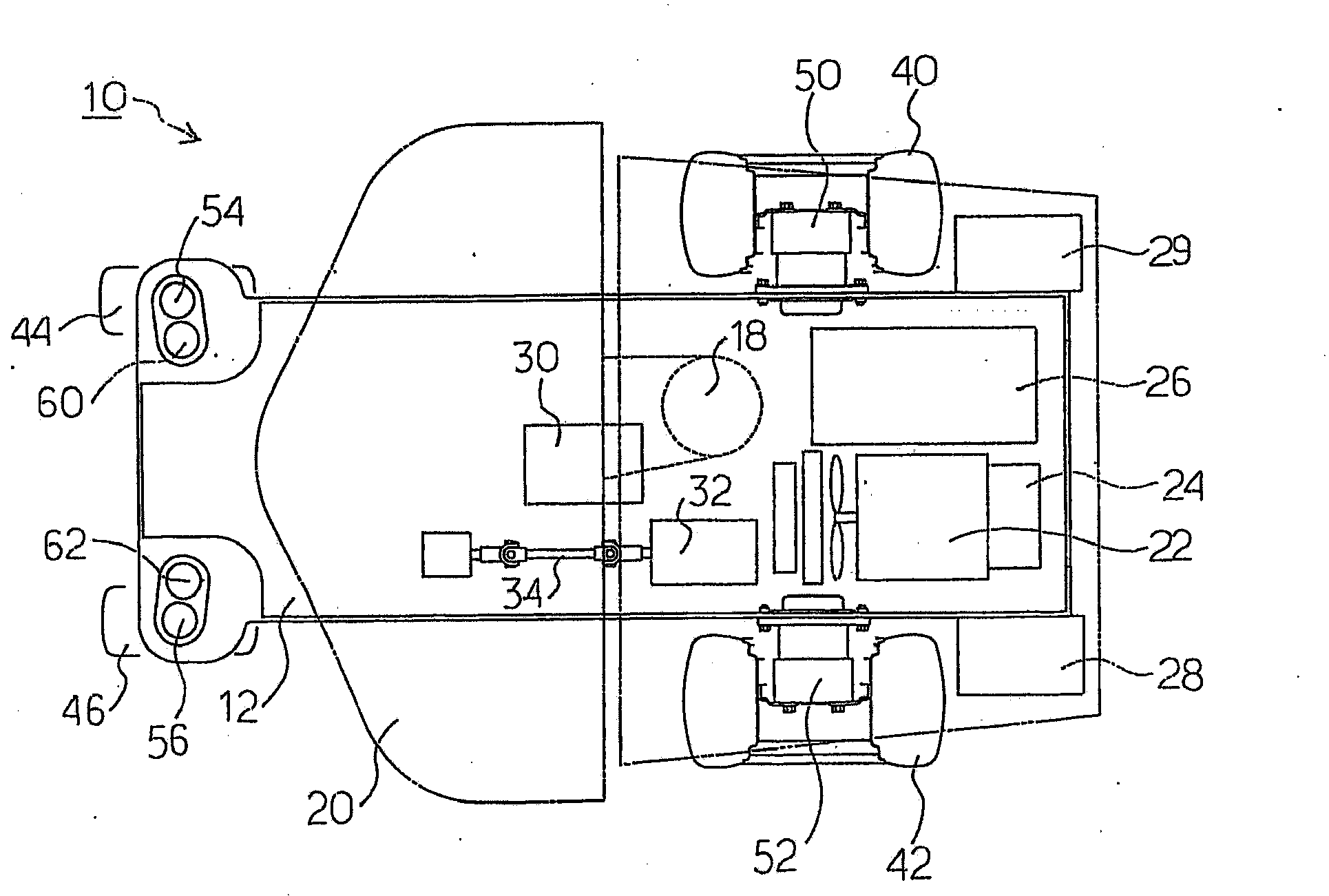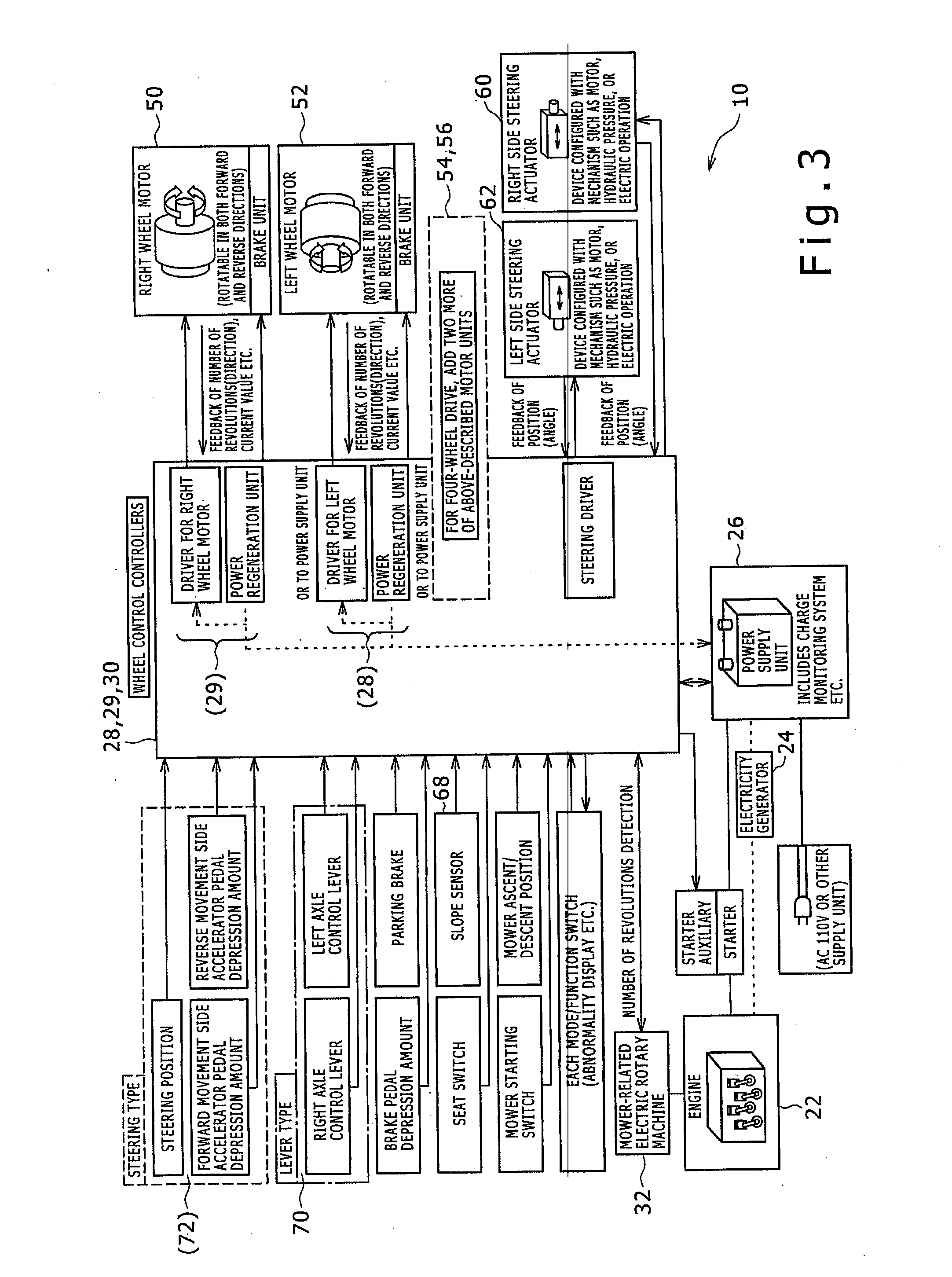Riding lawn mower
- Summary
- Abstract
- Description
- Claims
- Application Information
AI Technical Summary
Benefits of technology
Problems solved by technology
Method used
Image
Examples
first embodiment
[0136]Hereunder, a first embodiment of the present invention relating to a first aspect and a second aspect of the present invention is described in detail while referencing the drawings. Although in the following description a four-wheel drive type apparatus having left and right rear wheels as main drive wheels and left and right front wheels as steering control wheels that are each independently provided with an electric rotary machine is described as an example riding lawnmower, this embodiment may also be applied to riding lawnmower of a three-wheel drive type having one wheel as a steering control wheel, or the like.
[0137]Further, although in the following an example is described wherein an electric rotary machine is used as a driving source of the riding lawnmower, as a driving source of the left and right rear wheels, a driving source of the steering control wheels, and as a driving source of a lawnmower blade, a driving source other than an electric rotary machine may be us...
example 1
[0142]FIG. 1 is a side view of a riding lawnmower 10, and FIG. 2 is an abbreviated top view that illustrates components on a main frame 12 in the riding lawnmower 10. FIG. 3 is a block diagram that relates to electrical system components in the riding lawnmower 10. First, the disposition of each component is described centering on the main frame 12 using FIG. 1 and FIG. 2. Thereafter, the details of each component are described using FIG. 3.
[0143]As shown in FIG. 1 and FIG. 2, the riding lawnmower 10 is a self-propelled off-road vehicle suited to lawn mowing in which components such as left and right wheels 40 and 42 as main drive wheels, left and right caster wheels 44 and 46 as steering control wheels, a mower deck 20 provided with a lawnmower blade as a lawnmower rotary tool, and a seat 14 on which an operator sits and performs steering for lawn mowing work are attached to the main frame 12.
[0144]The main frame 12 forms the skeleton of the riding lawnmower 10, and is configured a...
example 2
[0178]FIG. 8 is a block diagram regarding a portion relating to a turn function in a case in which the riding lawnmower 10 comprises a two lever-type operator. In this connection, the example section will be described again with respect to a case in which the riding lawnmower comprises a steering operator. Hereunder, the same reference numerals are assigned to components that are the same as components described in FIG. 1 to FIG. 3 and a detailed description thereof will not be repeated. In the following description the reference numerals shown in FIG. 1 to FIG. 3 are used. The portion corresponding to the controllers 28, 29, and 30 in FIG. 3 is represented as a control section 100 in FIG. 8. In the control section 100, the turn drive module 112 corresponds to controllers 28 and 29 including a driver circuit portion for each electric rotary machine, and the other portions and a memory section 102 connected to the control section 100 correspond to the controller 30 including the cont...
PUM
 Login to View More
Login to View More Abstract
Description
Claims
Application Information
 Login to View More
Login to View More - R&D
- Intellectual Property
- Life Sciences
- Materials
- Tech Scout
- Unparalleled Data Quality
- Higher Quality Content
- 60% Fewer Hallucinations
Browse by: Latest US Patents, China's latest patents, Technical Efficacy Thesaurus, Application Domain, Technology Topic, Popular Technical Reports.
© 2025 PatSnap. All rights reserved.Legal|Privacy policy|Modern Slavery Act Transparency Statement|Sitemap|About US| Contact US: help@patsnap.com



